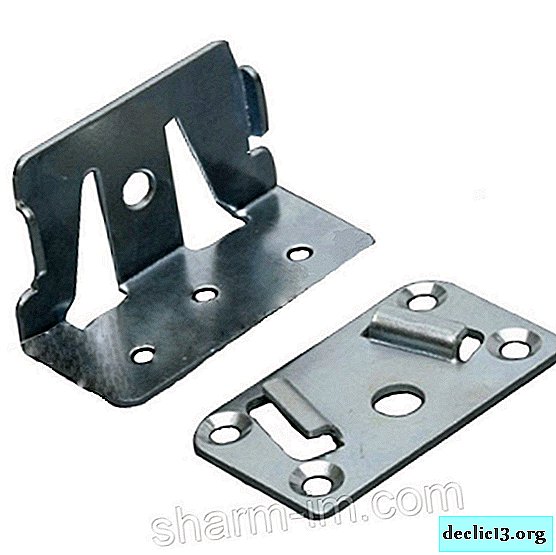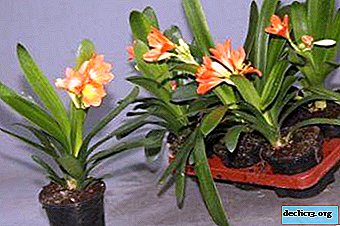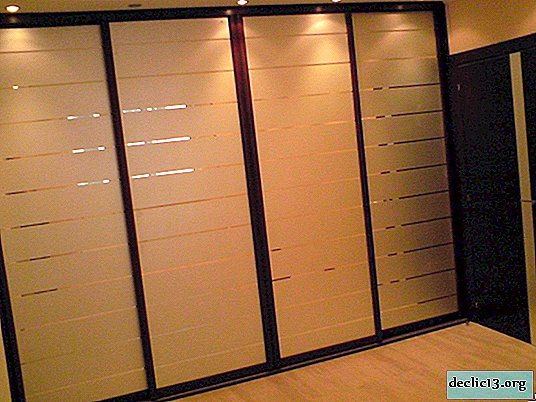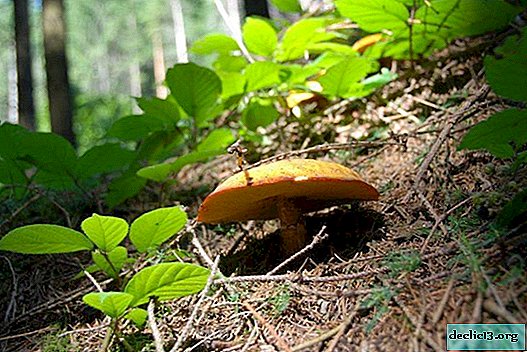Long-life plant Wisteria Chinese Blue Sapphire at home: description, planting and care
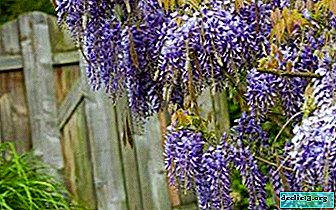
Chinese Wisteria Blue Sapphire is a long-lived plant, characterized by long flowering.
The waterfall of the most beautiful fragrant earrings of blue-violet color looks attractive and very picturesque in gardens, parks, in summer cottages and at home. Read more about planting and care at home, the features of reproduction and flowering of this species, as well as about diseases and pests of this plant, read in our article.
Botanical description, habitat and origin
Wisteria or Chinese Wisteria (lat. Wisteria chinensi) - a tree-like twisted climbing subtropical plant of the legume family (lat. Fabaceae).
Reference! The name Wisteria was given in honor of the American professor of anatomy Caspar Wistar (1761-1818). The name Wisteria is translated from Greek as "sweet."Natural Chinese wisteria is found in the mountainous and forested areas of China and Japan. It was introduced to Europe in 1816.
 Chinese wisteria blue sapphire is a large decorative vine, on which, during flowering, violet-blue flowers with a fragrant sweet aroma appear, hanging down with lush long tassels from the stems.
Chinese wisteria blue sapphire is a large decorative vine, on which, during flowering, violet-blue flowers with a fragrant sweet aroma appear, hanging down with lush long tassels from the stems.
Chinese Wisteria can grow up to 25 meters, adding an average of 1.5-2 meters per year. After 5 years of life, the plant stops the phase of active growth, but is able to live up to 100 years.
The stems at the base have a diameter of 25-40 cm and twist counterclockwise. The plant is characterized by dense large foliage of complex shape - each leaf can grow up to 30 cm in length and consist of 8-12 small leaves. Flowers bloom simultaneously in April-May, along with the emergence of leaves. Inflorescences appear in the axils of the leaves or on the tops of the branches. Repeated, less abundant flowering occurs in August-September.
Planting and care at home
Wisteria is widely used not only in landscape design, it is also can be grown at home as a bonsai or to keep a young plant in a pot until planting in open ground. The plant is quite whimsical and requires a lot of attention and care.
- Temperature. The optimal winter temperature of Chinese wisteria blue sapphire is 5–9 ° С. From mid-February, the temperature should be gradually increased, awakening the plant. At the end of spring, wisteria is transferred to fresh air, at which time it perfectly tolerates any heat.
- Watering. During the growing season (spring-summer), moderate watering is 1-2 times a week, well-defended water and spraying flowers and leaves as necessary. In the dormant period (fall-winter), watering is minimized. In order not to expose the roots, water must be poured along the edge of the pot.
- Shine. Wisteria is photophilous and negatively reacts to a lack of ultraviolet radiation. In winter, the plant is recommended to additionally highlight with special lamps. When planting in the garden, you should choose the most lighted place.
Important! With a lack of light, wisteria will not bloom.
- Priming. The bottom of the tank must be laid out with drainage (stones, broken brick, expanded clay). The earth should pass air and water well to the roots, so it is recommended to combine turf soil and a mixture of peat, sand and humus in equal proportions.
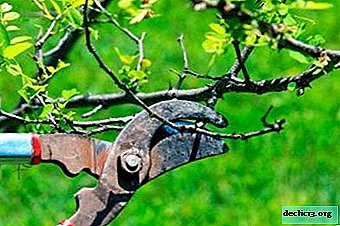 Pruning. Trimming is required to form a dense and lush crown. At the beginning and during flowering, young shoots are cut, preventing the flowering clusters from growing and developing. Wilted inflorescences also cut.
Pruning. Trimming is required to form a dense and lush crown. At the beginning and during flowering, young shoots are cut, preventing the flowering clusters from growing and developing. Wilted inflorescences also cut.In the fall, 4 buds of the shoot of the new season are cut, and in early spring, during the garter, the same shoots are shortened by 2 more buds.
Flowers appear only on old or last year's branches.
- Top dressing. In the hot period, it is advisable to alternate liquid mineral fertilizers with organic ones and add them when watering 1 time in 2 weeks. In summer, you can make a one-time feeding with chalk, watering the plant under the root with a chalk solution.
- Pot. A ceramic pot is best suited - wide, but not deep, since the root system of the wisteria is small and the roots will not be able to absorb enough moisture and minerals from the depths of the pot for full plant growth.
- Transfer. A young plant needs to be replanted every year, mature every three years. The best time is considered the peak of growth - July. For a transplant, you will need a pot 3-4 cm larger than the previous one in diameter, which must first be scalded with boiling water and placed in it drainage. The plant is carefully pulled out of the previous container and, together with a lump of earth, will be placed in a new flowerpot. The empty space is filled with prepared soil.
Important! Immediately after planting, you need to water the soil abundantly and rearrange the pot in a dark place for several days.
To learn about how to generally grow decorative Chinese wisteria in the garden and at home, see this article.
Features of propagation of the species
- Seeds - practiced by breeders and experienced gardeners. Seeds are planted in closed ground in December, seedlings are transplanted in open ground in early April. This method is considered the most time-consuming.
- Lignified cuttings - In early spring, an annual shoot is cut from the mother bush and cut into cuttings. Ready-made cuttings can be purchased at nurseries.
- Layering - A healthy annual shoot takes root at the beginning of flowering, while it is still part of the mother bush.
- Grafted seedlings - in winter, a strong seedling grown from a seed is grafted onto the root.
The most reliable way to get a clean and good variety is to get a seedling vaccine, however, this requires experience and skills.
Bloom
Flowering plants can be observed only after 5-10 years of life. At first, it gets used to the habitat and gives long thin shoots. Flowering can continue not only throughout the summer, the plant can bloom again in early autumn.
Diseases and Pests
 Wisteria is not very resistant to disease, it is susceptible to fungi, viruses and pest attacks:
Wisteria is not very resistant to disease, it is susceptible to fungi, viruses and pest attacks:
- powdery mildew - fungus, due to which the leaves are covered with a whitish coating;
- chlorosis - causes yellowing of the leaves due to iron deficiency in the soil;
- aphid colony - the plant withers, the leaves are clotted, the flowers are thinning and fading;
- clover tick - It affects leaves that are covered with small light strokes, crack, and then twist.
Similar flowers
Wisteria can be confused with other vertical vines used for landscaping:
- decorative beans;
- sweet pea;
- clematis;
- apios flowers;
- acacia.
Deciduous creeper native to Asia is the dream of every gardener. Her clusters exuding a sweet and captivating aroma, and a symphony of a carpet of flowers shimmering in all shades of blue, will become a magnificent decoration of any garden or home.

 Pruning. Trimming is required to form a dense and lush crown. At the beginning and during flowering, young shoots are cut, preventing the flowering clusters from growing and developing. Wilted inflorescences also cut.
Pruning. Trimming is required to form a dense and lush crown. At the beginning and during flowering, young shoots are cut, preventing the flowering clusters from growing and developing. Wilted inflorescences also cut.



